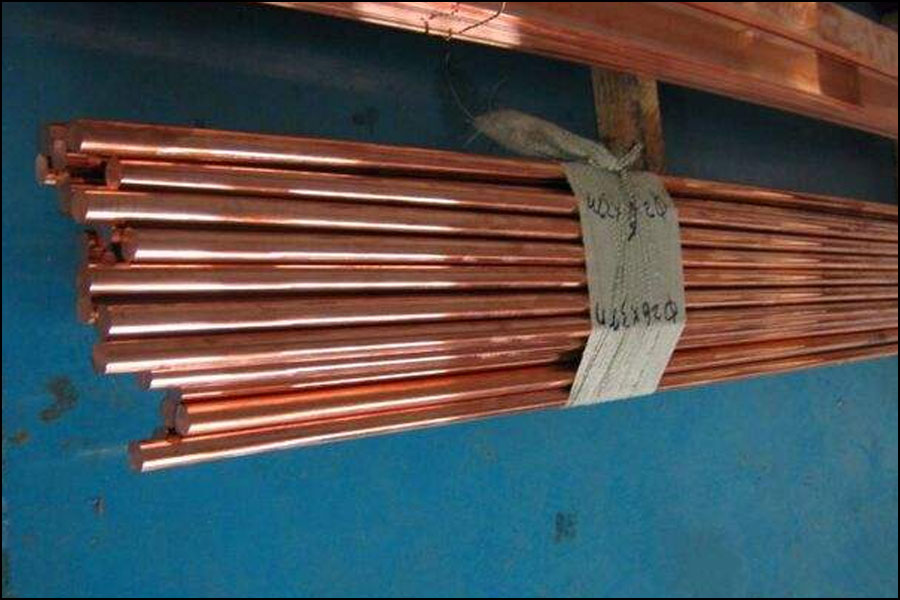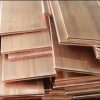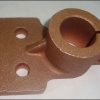
Bronze generally has a substantial increase in strength due to the addition of certain alloying elements to the copper, while obtaining certain special properties. Bronze has a relatively large deformation resistance, which brings some difficulties to CNC machining; but at the same time, it gives copper some specific functions, such as high elasticity, softening resistance, high corrosion resistance, high wear resistance and so on. As a result, the application field of copper has been greatly expanded and has become the support of new technologies.
Uses Of Tin Bronze
- QSn4-3: Springs, reeds and other elastic components and pipe fittings, chemical equipment, wear-resistant parts and anti-magnetic parts, etc.
- QSn4-4-2.5&QSn4-4-4: Parts subject to friction in aviation, automobile, tractor industry and other industries, such as bushes, discs and bushings, etc.
- QSn6.5-O.1: Widely used in the manufacture of elastic components, wear-resistant parts and diamagnetic parts in precision instruments. Such as spring contact sheets or other springs with good conductivity; various altimeters in the aviation industry, springs, connecting rods, washers, and small shafts for speedometers; gears, brush boxes, contactors, etc. in precision instruments
- QSn6.5-O.4: It is widely used in the instrument and meter manufacturing industry, mainly used to manufacture elastic components, wear-resistant parts and metal nets, etc.; in the aviation industry, it is mainly used as a combined airspeed indicator, intake pressure gauge, etc. Diaphragms, springs, etc.
- QSn7-O.2: Mainly used to manufacture wear-resistant parts and structural parts that work under medium load and medium sliding speed, such as wear-resistant washers, bearings, bushings, turbines, etc.; it can also manufacture springs, reeds and other machinery, Electrical parts
- QSn4-O.3: Mainly manufacture flat tubes and round tubes of various sizes for use as elastic sensitive components in control measuring instruments and other equipment
- QSn4-4-4: Mainly used to manufacture friction-bearing parts, such as bushes, discs and bushings, etc.
- QSn4-4-2.5: Mainly used in the manufacture of parts subject to friction in aviation, automotive and other industrial sectors, such as cylinder piston pin bushings, bearing box bushings, auxiliary connecting rod bushings, discs and washers, etc.
Uses of aluminum bronze
- QAl5&QAl7: used to make springs and other elastic components that require corrosion resistance
- QAl9-2: Used to manufacture high-strength parts, such as bearings, gears, bushings and other high-load-bearing structural parts
- QAl9-4: Used to manufacture high-strength, wear-resistant parts, such as bearings, bushings, gears, eddy currents, etc.; it can also manufacture nozzles, flanges, modified rocker arms, brackets, etc.
- QAl0-3-1.5: Used to manufacture high-strength parts and various standard parts, such as gears, bearings, discs, guide rocker bushes, flywheels, fixed nut nozzles, etc.
- QAl10-4-4&QAl10-5-5: Used to manufacture high-strength wear-resistant parts, such as the bushings of aircraft landing gear driven cylinders and high-strength bearings, spherical seats, booster sliders, lead screws, Driven shaft, support ring, fuel distribution valve, connecting rod and nut, etc.
- QAl1-6-6: Used to manufacture high-strength wear-resistant parts and parts that work below 550°C
Uses of beryllium bronze
60% of beryllium bronze products are used to manufacture elastic components, such as diaphragms, bellows, bellows, generator brush springs, relay springs, spring contact sheets, circuit breaker springs, and various springs on aviation instruments. In addition, beryllium bronze is also used in the manufacture of precision instruments, and various parts such as bearings, gears, and special non-sparking tools are manufactured. It is an indispensable and irreplaceable material in various industrial fields.
Uses of silicon bronze
It is mainly used to make various elastic elements and parts that work under corrosive conditions, as well as wear-resistant parts such as worm gears, worms, gears, bushings, brake pins and rods. The aviation industry is mainly used as elastic components and high-strength small structural parts, such as support, rods, shafts, spring rings, etc. for combined airspeed indicators, speedometers and altimeters. Strong cold deformation leads to anisotropy of the elastic properties of the material, so when using it as an elastic element, attention should be paid to the direction of the material and the low-temperature annealing of the element.
The use of zirconium bronze
The production technology of zirconium bronze is mature and the quality is stable. It is a good high-temperature conductive material. Typical applications include lead frame connectors for high-power integrated circuits, used in applications requiring high electrical conductivity, moderate strength, good bending performance and stress relaxation resistance, power transmission devices, full current, high temperature switches, and circuit breakers. Rectifiers, resistance welding heads and rollers, motor slip rings, heat dissipation parts and other parts that work at high temperatures.
Uses of cadmium bronze
Cadmium bronze has high electrical conductivity and thermal conductivity, good wear resistance, wear resistance, corrosion resistance and processability, and is widely used in the manufacture of conductive, heat-resistant and wear-resistant parts of electrical equipment. The main uses are: electronic commutators, switching elements, spring contacts, waveguide cavities, high-strength transmission lines, joints and contact welding machine electrodes and rollers.
The use of chrome bronze
Chrome bronze has high strength and hardness at room temperature and below 400 ℃, good electrical and thermal conductivity, and good processing and forming properties. Widely used in high temperature conductive wear-resistant parts of electrical equipment. The main uses are: motor commutator, slip ring, high temperature switch, electrode of electric welding machine, roller, clamper, brake disc, disc used in bimetal form and other requirements of high thermal conductivity, electrical conductivity, and high thermal strength Parts.
Uses of titanium bronze
Titanium bronze can be used to manufacture high-strength, high-elasticity, high-wear-resistant elastic components, electrical switches, relay elastic components, bellows, diaphragms, gears, bearings, bearings, bushings, etc.
Uses of magnesium bronze
Generally used in cables and other conductive materials, it can replace cadmium bronze in many aspects. Magnesium bronze is mostly supplied in the form of wire, which is mainly used to make conductive components such as cables and aircraft antennas.
The use of iron bronze
Iron bronze is suitable for occasions that require high electrical conductivity and strength. Widely used in circuit breaker components, contact springs, electrical fixtures, springs and terminals, flexible hoses, fuse clips, washers, plugs, rivets, condenser welded tubes, integrated circuit lead frames, cable shields, etc. The most typical application is the lead frame required for integrated circuits or splitter components.






